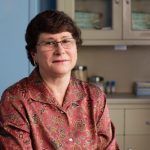 Stephanie Trifoglio, MD, FACP
Stephanie Trifoglio, MD, FACP
AGS Member
Private Practice Internist & Geriatrician
As a geriatrician, I see all of my patients myself, carefully take their history, and review all of their medications, both prescribed and over the counter (OTC). One patient’s story highlights why this is still very important and worth the time and effort.
A new patient, Mrs. B, came to me for help in managing her dementia. Her husband was remodeling their home to make it accessible as she was now barely able to walk. She was becoming more confused. She had previously seen an internist and two neurologists. Her husband gave a history of Parkinson’s disease, along with a several-year history of colitis and longstanding diarrhea.
The initial history revealed that Mrs. B. had progressive weakness, unsteady gait, and confusion. She had muscle jerks at night. She had three recent car crashes and subsequently stopped driving. She had even lost her ability to do sudoku. This was significant as she had been a doctorate-level biologist. A review of her medications showed that she had four years of taking Pepto-Bismol, two tablets, four times per day, prescribed for collagenous colitis. She took this dose consistently.
The active ingredient in Pepto-Bismol is bismuth, and I have never before had a patient take this much bismuth. Being naturally curious, and always looking for potentially reversible causes of dementia, I did a bit of research and ran basic blood tests on Mrs. B. I also instructed her to stop taking the bismuth. Continue reading



